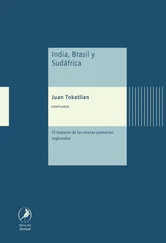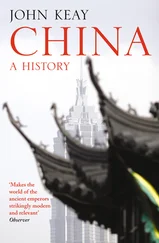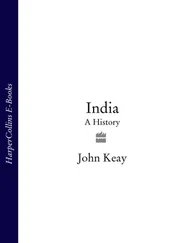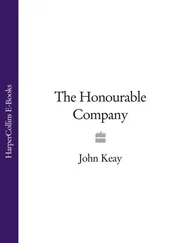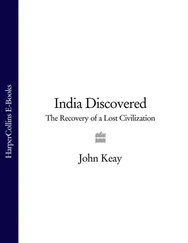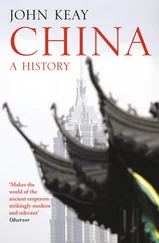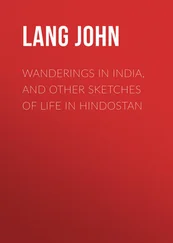Amongst Taxila’s imports from the west came the Aramaic script, which may have been the first script to be used in India since that of the Harappans. Whether or not the city was founded by the Achaemenids, it began heavily in debt to its western contacts, and would later become something of a showcase for imported western and even Mediterranean ideas and artefacts.
Yet it was also revered as a citadel of orthodoxy by the janapadas in the east. In the Ramayana it is claimed that Taxila was founded by one of Lord Rama’s nephews; in the Mahabharata it is said that it was actually at Taxila that the story of the great Bharata war was first told. Clearly the place was highly regarded throughout northern India. Students went there to learn the purest Sanskrit. Kautilya, whose Arthasastra is the classic Indian treatise on statecraft, is said to have been born there in the third century BC. It was also in Taxila that, in the previous century, Panini compiled a grammar more comprehensive and scientific than any dreamed of by Greek grammarians. ‘One of the greatest intellectual achievements of any ancient civilisation’, 4it so refined the literary usage of the day that the language became permanently ‘frozen’ and was ever after known as Samskrta (‘perfected’, hence ‘Sanskrit’). Given the defining role of language in arya identity, ritual observance and social differentiation, the importance of Panini’s work and of Taxila’s patronage can scarcely be exaggerated.
From Panini’s examples of different grammatical forms some historical information may also be garnered. ‘Eastern Bharatas’, for instance, is Panini’s example of tautology and verbosity; the ‘eastern’, he implies, is a superfluous qualification since everyone knows that Bharatas live in the east. It follows that by the fourth century BC all clans claiming Bharata descent must long have been located to the east of Taxila – like the Kuru in the Doab. Incidentally, by this chance example Panini also hinted at a definition of Bharata-varsha which, as ‘Bharat’, would nicely serve the purposes of twentieth-century nationalists in a Pakistan-less India.
Legitimacy as conferred by descent from the Bharatas, or one of the other arya clans, was yet more critical to emerging dynasties of dubious origin in the late first millennium BC. It accounts for the emphasis on genealogy in the much-revised epics and for the manipulation of descent lines in the Puranas ; it may also account, along with trade, for the primacy accorded to Taxila located in the heartland of the arya ’s original ‘land of the seven rivers’.
Nowhere was this need for legitimacy more acutely felt than amongst the thrusting new states and cities far away to the east in Bihar and Uttar Pradesh. By way of the uttarapatha , the ‘Northern Route’ along the base of the Himalayas, they maintained close contacts with Taxila and, judging by the punch-marked coins found in the Bhir Mound, were soon financing much of its trade. To them the city owed its prominence quite as much as to Achaemenid enterprise. For while Gandhara and ‘India’ remained under Achaemenid suzerainty well into the fourth century BC, another would-be imperium, India’s first and much its proudest, had begun flexing its muscles in the distant plains of southern Bihar.
Here, in the kingdom of Magadha, between the south bank of the sprawling Ganga and the rolling forests of Chota Nagpur, in a region today of the bleakest rural poverty with cities of almost unendurable squalor, the historian’s patience is finally rewarded. From a pre-historic dawn as shrouded in myth as any, the smoke of burnt offerings and ancient obscurities begins at last to lift. A sparsely featured but genuinely historical landscape is briefly revealed.
At the easternmost extremity of the uttarapatha , the kingdom of Magadha, with its capital at Rajagriha (Rajgir), occupied the region between today’s unlovely cities of Patna and Gaya. Its location coincided with that of the sacred trails trodden by the Buddha and Mahavira; and its rise coincided with their followers’ concern for an accurate record of the masters’ lives and teachings. In consequence, a succession of authentic historical figures, together with a chain of related events, at last looms dimly from the myth-smoke.
Only the dates remain problematic. Buddhist sources show a healthy respect for chronology, and usually disdain the mathematical symmetries and astronomical exaggerations found in Vedic and Jain texts. Like Christians, they count the years to, and then from, a major event in the life of their founder. Thus, just as Christians measure time from the birth of Christ, so do Buddhists from the death, or parinirvana (achievement of nirvana ), of the Buddha. Neither of these benchmarks can be determined with absolute precision. But because the Christian BC/AD system has become something of an international convention, it matters little that Christ may in fact have been born, not in zero AD, but several years later. On the other hand, it matters much that, depending on the tradition endorsed, the Buddha may have died either 350 to 400, 483 to 486, or even 544 years ‘Before Christ’.
Obviously, if the Buddhist chronology had commanded international regard, an agreed date for the parinirvana would long since have emerged, and it would then be the uncertainties about when Christ was born in terms of the Buddhist reckoning which would be considered unsettling. Euro-centric, or Christo-centric, assumptions about the measurement of time should be viewed with caution. Like those map projections which give mid-sheet prominence to Europe or the Americas, they carry an inherent distortion.
Nevertheless, the widely divergent dates adduced for the Buddha’s parinirvana do pose serious problems. That of 544 BC derives from a much later Sri Lankan tradition and is usually discarded. As between the 486 BC of Indian tradition and the 483 BC of a Chinese record, the difference is slight and not too important. Indeed, it was the near congruence of these two dates which led the majority of scholars to accept their validity; one or other was used to deduce a date for the Buddha’s birth of C566–3 BC, which thus became ‘the earliest certain date in Indian history’. Recently, however, opinion has swung towards a much later dating for the parinirvana , in fact ‘about eighty to 130 years before Ashoka’s coronation [in 268 BC], i.e. not a very long time before Alexander’s Indian campaign [327–5BC], i.e. between C400 BC and C350 BC’. 5This reappraisal of the evidence, mainly by German scholars, shunts the Buddha forward by around a century. Besides promoting the Achaemenid conquest of Hindu in C520 BC to the status of India’s first (more or less) certain date, it carries potentially devastating consequences for the chronology of just about every development in India of the first millennium BC. The Vedic period may have to be extended into the sixth century, state-formation and urbanisation brought forward to the fifth century, and the chronology of Magadha before the appearance of Ashoka condensed into a hundred years.
Alternatively, it may be taken to suggest a much longer time-lapse between the India of later Vedic texts, like the Upanisads , and that of the earliest Buddhist and Jain texts. Even a cursory acquaintance with these sources leaves the reader wondering whether they can possibly refer to the same society. The Sanskrit texts evoke a mostly agrarian way of life in which states play a minor part and status is governed by lineage and ritual observance. Buddhist and Jain texts, on the other hand, portray a network of functioning states, each with an urban nucleus heavily engaged in trade and production. Here wealth as much as lineage confers status. Indeed, the Buddhist concept of ‘merit’ as something to be earned, accumulated, occasionally transferred and eventually realised seems inconceivable without a close acquaintance with the moneyed economy. By interleaving between these two societies a further century, Buddhism’s newly revised or ‘short chronology’ allows for a more gradual and credible evolution of state and city without unduly taxing the archaeological record.
Читать дальше


